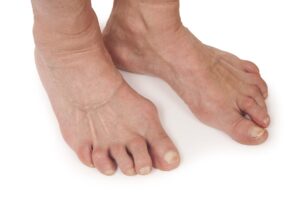
Hip Dysplasia: A Guide for Parents and Adults
Hip dysplasia (developmental dysplasia of the hip – DDH) is a condition that affects the hip joint.

Fungal Nail infection otherwise known as ‘Onychomycosis’, is a fungal infection of the nail plate. It is a common dermatological condition in Australia. A fungal nail infection may start as a white or yellow spot under the tip of the finger or toenail. As it spreads, the infected nail will change appearance.
There are 4 major types of fungus that can live and thrive in the nail bed environment. But the most common is Distal subungual onychomycosis (DSO). It is caused by the same fungi that cause most cases of athlete’s foot (dermatophytes). DSO infects the skin under the end of the nail (nail bed) and in the nail. The infection starts at the end of the nail bed, and part of the nail often turns yellow or white. Pieces of skin and nail fragments (debris) build up under the nail. As the condition gets worse, the nail may crumble and split, and it may separate from the skin. A thickened nail and a large amount of debris under the nail may cause discomfort when wearing shoes.
Sometimes treatment doesn’t work because the anti fungal treatment won’t be attacking the weak point of the fungus. Each type has a different cellular composition, just like each medication has a different point of attack. It’s like attacking a stone wall with a twig. It just won’t work.
Often at rise in fungal nail infections occurs in the summer period due to increased use of communal change rooms at the gym, swimming pools or beachs, or via use of unsterilized equipment in nail salons, transferring from one patient to the next. The inside of a shoe, where it’s dark, warm and moist, is the perfect environment for fungi to thrive.
An infection toe/nail can be embarrassing and difficult to treat. It will not clear up on its own and can be contagious spreading to other nails. It is important to treat at the first sign of symptoms as it may spread resulting in other fungal infections.
If you are having trouble with your fungal nails, let the team at SOLE–LUTION PODIATRY help you. You can reach us on 02 9569 5145

Hip dysplasia (developmental dysplasia of the hip – DDH) is a condition that affects the hip joint.

Heel pain can be a real drag, especially when that first step in the morning feels like stepping on a tack. One culprit behind this discomfort can be heel spurs. But what exactly are they, and more importantly, how can you fix them?

Arthritis in the feet can significantly disrupt your daily life, turning simple walks into painful struggles.